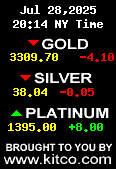Mar 17
| The U.S. 1916 Mercury dime minted at the Denver mint is one of the rarest and most valuable dimes from the last century. 1916 was the very first year that the Mercury, or Winged Liberty Head, dime was minted. Designed by Adolph Alexander Weinman, there were only 264,00 specimens minted in 1916 from the Denver mint. The diameter of the coin is 17.9 millimeters, weighing a total of 2.5 grams, and consisting of 90% silver and 10% copper. The coin also sports a reeded edge, much like the current Rosevelt dime in circulation today. Adolph Alexander Weinman was born on December 11, 1870, in Germany, but came to the United States of America in 1881, at the age of 10. He began taking eveing art classes when he was 15 years old at Cooper Union, and went to Art Students League of New York after that. He opened his own studio in 1904. Along with designing the Winged Liberty Head(Mercury) dime, he also is credited with the design of the Walking Liberty Half Dollar, which is still used on the American Silver Eagle one-ounce bullion coin. Weinman sculpted many things, and they are on display throughout the United States. Since there were only 264,00 of these dimes minted, they are very rare, and can be very expensive. R.S. Yeoman's 2011 Official Blue Book lists the coin at $500 in good condition. Remember, that is in good condition, which means that there is barely any detail left on the coin, but the letters and date are still clear and legible. The same book also says that if a MS-65 specimen would be worth $16,000! That's equal to about 12 1909-S V.D.B. wheat cents in MS-63! A PCGS graded MS-65 1916-D dime was recently sold at auction for $32,775. Since this coin demands such a high price, there are a large amount of fakes out there. An article on PCGS's web page list a few ways to try to determine if the coin has been altered at all, but, of course, recommend sending the coin to them to have there 'expert graders' make sure that it is. PCGS says that the D mint mark on the 1916 dime has a square-like appearance. In the center, there is a small triangular opening. There were a total of 4 different dies used to make the dimes. 2 of the 4 dies that were used show re-punching marks, which leaves a 'notching' effect on the upper left side. They suggest that if you are planning on buying one of these coins, make sure that is is a PCGS cerified coin, that way for sure you are receiving a genuine 1916-D dime. If I buying an example of the coin, I would make sure that it was verified by one coin grading company. I will not say that it would have to be PCGS, seeing that there are a good many other companies that have a very high reputation. Either way, this coin could be a very solid investment. [Editor's Note: Today's article was written by Elijah] |



